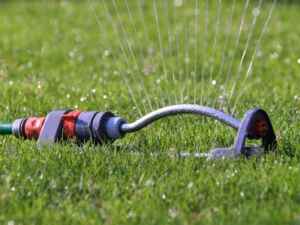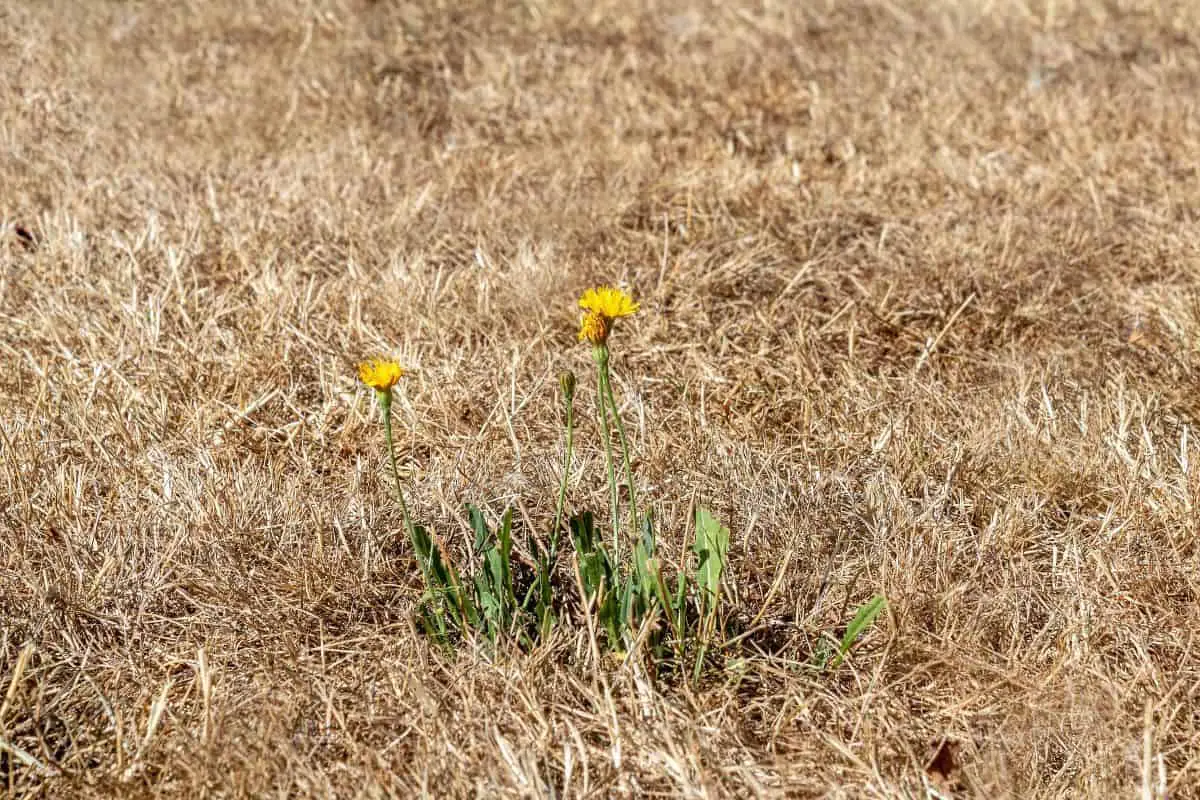How To Avoid Burnt Lawns Caused By Mowing?
You know that scorched look your lawn gets after a long dry spell? When you think it can’t get any worse, you mow the lawn and turn those dried-up brown spots into even more crispy, brown toast. What a bummer! While keeping a lush green lawn might seem like an impossible accomplishment during these hot summer months, there are ways to avoid making your grass crispy as a potato chip.
 Here are eight tips for avoiding burnt lawns caused by mowing:
Here are eight tips for avoiding burnt lawns caused by mowing:
1) Mow Often
If the grass is very tall, such as Kentucky Bluegrass or Bermuda Grass, then don’t wait longer than five days to mow. The taller the grass is, the more quickly it can dry out.
2) Mow High
Make sure you raise the mower to the highest setting. This will help your lawn conserve moisture and encourage healthy rooting.
3) Water Daily
Don’t just water once or twice a week. When temperatures rise into triple digits for multiple days in a row, water every day until things cool down again. Watering twice a day might be necessary if no rainfall is in the forecast during drought conditions. Also, watering before you mow is beneficial too. If you give your lawn a nice long drink just before mowing, then there’ll be less dry soil for the newly-cut blades to dry out against.
4) Water Deeply
Don’t just wet the grass down. Give it a nice deep soaking to ensure that root systems grow strong. If water puddles on top of the soil, then you are wasting your time and giving your lawn a sunburn.
5) Check For Moisture
Lift small sections of your grass to see any moisture in the ground underneath at all. When roots have adequate water, they will be dark green and moist-looking instead of brown and dry. Then you know your lawn is getting enough water. Give those thirsty blades a drink!
6) Bag Or Mulch
When using a bag, don’t let it fill up – empty it every 2/3rds full. Also, move your lawnmower handle forward on its own when emptying bags so that no extra effort is required. Mulching your grass not only helps to avoid throwing away clippings but it will help recycle the nutrients in your lawn that are lost when you bag the grass.
7) Clean Mower’s Blades
Remove any rocks, grass clippings, or other debris stuck between the blades with a stick or small tool before starting your mower again. If you don’t, these things will get shredded onto your lawn and make it look like Edward Scissorhands attacked it. Then, use a wire brush (up to 3/4 of an inch wide) to scrape off excess build-up on the spinning steel blades at least once every 5 hours of engine operation (more often if you’re cutting wet grass).
8) Invest In Weed Control
If none of these tips help you win the battle against brown spots on your lawn, then it might be time to call in an airstrike. That’s right – invest in some Weeds Be Gone! This helps keep weeds off of your grass so that you won’t have to worry about killing its healthy blades when mowing.
What To Do If Your Lawn Is Burnt
As the days begin to heat up, some people are faced with a problem, they have just mowed their lawn, and now it’s burnt. If you live in an area where droughts are common, this can be devastating for your property. A scorched lawn will not only look bad but is also hazardous. Let’s go through how to deal with this issue.
1) Check Soil
You should check what type of soil you have regardless of whether or not the burn is new or old. Sandy soils tend to hold less water which means they dry out more quickly compared to other soil types, so you need to seek emergency help first, especially if there is no apparent damage (e.g., mild discoloration). Dark brown discoloration on the soil is evident for soils with higher water-holding capacity.
2) Water The Area
Immediately water the area that has been burnt, ideally with a sprinkler. Do this several times daily until you see signs of recovery. Remember that just because your neighbor’s lawn is okay doesn’t mean yours will be too. Every lawn is different, and numerous factors can contribute to how quickly it recovers (e.g., sunlight exposure). However, generally, after about ten days, the worst should have passed, but there may still be dead patches, especially if you don’t see any regrowth within two weeks.
3) Aerate Your Lawn
If you want to speed up the recovery process, aerate your lawn and top-dress with compost or mulch to help repair any damage done. You can use a garden fork or motorized core aerator. This will improve water penetration into the ground, which should give new grass seedlings the best chance of establishing themselves. Ensure that you remove all of the thatch (dead plant matter) afterward if it’s thick (e.g., more than 1cm high); otherwise, it could lead to disease problems later on.
4) Apply A Lawn Feed
It’s unlikely but possible that some areas may not recover. If you think this is the case, apply a lawn feed or top-dress with compost to promote grass regrowth in these areas. If this still doesn’t work, consider replacing the dead plants (look at your local garden center for suitable replacements) or just completely reseed your lawn with a mixture of new seeds.
Depending on the severity of the burn, it could take several weeks, months, or even years for your lawn to fully recover. Sit back and be patient! Of course, if you mow before the area has recovered, you could seriously damage what’s left of your grass, so don’t do it unless necessary.
 Reasons for Dry/ Burnt Lawns in the Summer
Reasons for Dry/ Burnt Lawns in the Summer
A dry lawn can be a sign of many things. One reason your lawn may be dry is that you are over-watering it, not watering enough, or during the summer when there is less moisture in the ground. Here are some other possible reasons why your yard may be suffering from drought this summer:
1) Poor Drainage
Saturated soil inhibits airflow and creates an environment that doesn’t support root growth. Roots need oxygen to function properly, but when they don’t get it due to saturated soil conditions, they suffocate and die off. When this happens, it takes time for new roots to grow back, which reduces the nutrient and overall health of the turf.
2) Lawn is Brown Due To Environmental Concerns
This can occur when lawns are under stress due to lack of water, periods of exposure to high temperatures, or low soil fertility with reduced availability of nutrients. One symptom would be discoloration, usually rust-colored. If your grass is brown and has a rusted appearance, you may need to fertilize your yard by adding iron with nitrogen-rich fertilizer followed by regular watering. If it’s not environmental (from lack of water or exposure), you need to look more into ways to get rid of brown spots in the yard.
3) Inconsistent Watering
A good way for people not familiar with irrigation systems is to pour some water on them every once in a while. This may not be the best idea if you are looking to conserve water, save money on your water bill, or have healthy turf that is not struggling with dehydration. When the soil is dry, the roots die off and decay, which reduces nutrient uptake into the plant. It can also damage your lawnmower by exhausting it faster than usual because of overloading.
4) Lawn Grass has Newly Been Planted
If you recently planted grass seeds in your yard, it takes time to grow, so please stop watering them! You are drowning out your new babies, killing them before they get a chance to thrive due to the lack of nutrients from their taproots being obstructed by too much moisture. They need to break through the soil, reach out for nutrients in the ground. Once they do this, it is vital that they not be overwatered because their roots will rot away, causing them to die off again. Remember: grass needs water but does not like to be over-watered.
5) Contaminated Soil
A common cause of turfgrass death is when herbicides are applied instead of fertilizer or vice versa. Also, suppose you have contamination from heavy metals, oil, gasoline, paint residues, etc. In that case, your yard could use some professional help to remove these contaminants and make sure no one gets hurt stepping on contaminated soil/ grass.
 6) Lawn Grass Has Never Been Fertilized
6) Lawn Grass Has Never Been Fertilized
If your grass has never been fertilized, you should start doing so ASAP. Not only will it make your lawn look more vibrant and green, but it will promote growth, making stress due to lack of waterless intense. Every time you water a plant, the soil absorbs whatever nutrients are present at that time. If there are no nutrients available, the plants receive nothing from the water source and therefore die off from malnutrition or dehydration
7) Grasses are Mixed
Mixing different kinds of grasses is never a good idea because the requirements for each plant may be different in regards to sunlight exposure, shade tolerance, soil type, etc. Also, mixing plants with varying root structures will not allow the roots to spread correctly, which can lead to death by suffocation or compaction.

